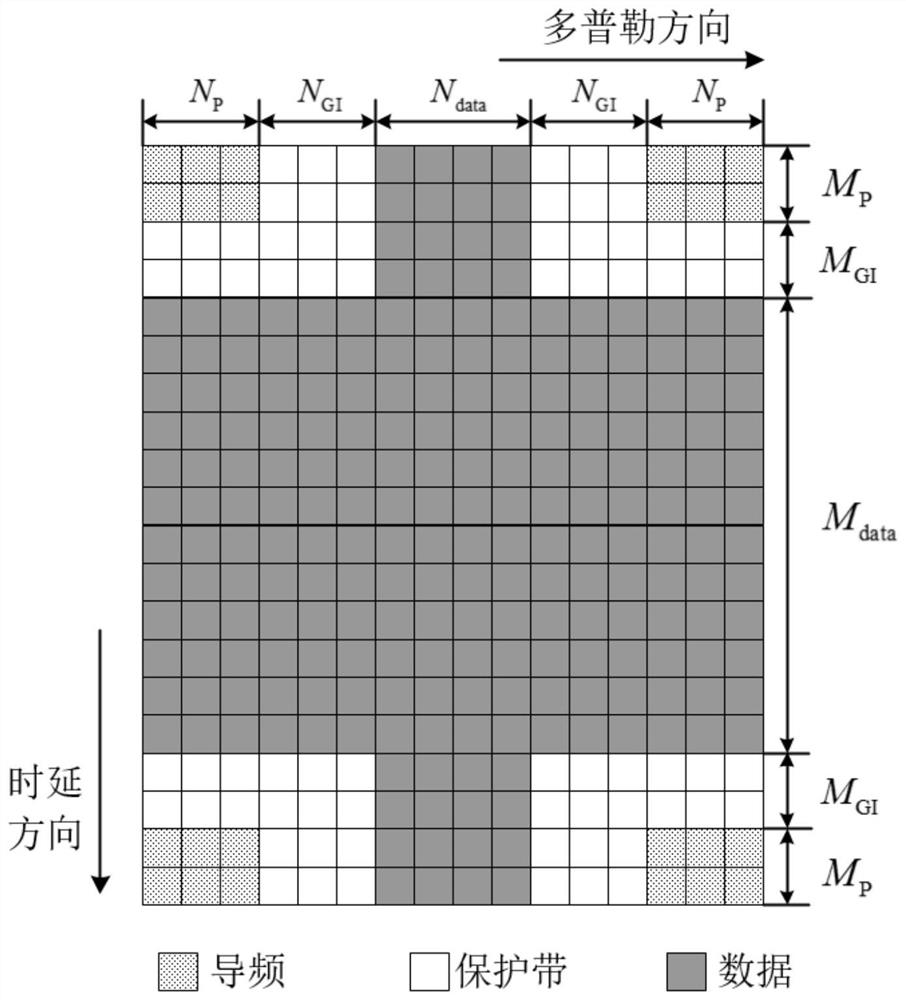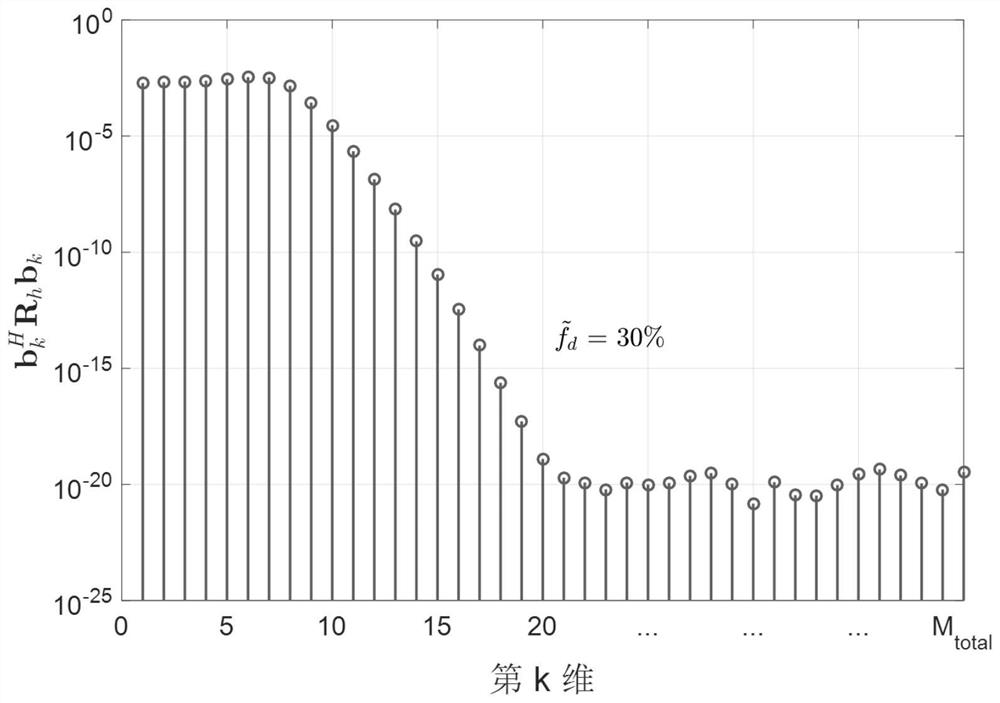Low-dimensional subspace OTFS channel estimation method
A channel estimation, orthogonal subspace technology, applied in digital transmission systems, electrical components, modulated carrier systems, etc., can solve problems such as large computational complexity, no reflection of channel response changes, inconsistent communication scenarios, etc., to achieve ECR estimation Accurate, reduced computational complexity effects
- Summary
- Abstract
- Description
- Claims
- Application Information
AI Technical Summary
Problems solved by technology
Method used
Image
Examples
Embodiment
[0085] figure 1 It is a structural block diagram of the OTFS transmission system of the present embodiment. The source end inputs the binary information bit stream to be sent, and the data bits are symbol-mapped and form a two-dimensional data block X∈C with pilot symbols M×N , where M and N represent the time delay and the data resource size in the Doppler domain, respectively. Transform X from the DD domain to the time-frequency (TF) domain using the Sim Fourier transform (ISFFT=), expressed as: D=F M XF N ,FM ∈C M×M and F N ∈C N×N represent the Fourier transform matrix, respectively. Convert the TF data block D to the time domain through FFT (Fast Fourier) to obtain the data block Read the time-domain data block S by column and add the cyclic prefix to send the time-domain data into the channel.
[0086] At the receiving end, after the cyclic prefix is removed, the time domain data is transformed into the TF domain through FFT, and then transformed into the DD dom...
PUM
 Login to View More
Login to View More Abstract
Description
Claims
Application Information
 Login to View More
Login to View More - R&D
- Intellectual Property
- Life Sciences
- Materials
- Tech Scout
- Unparalleled Data Quality
- Higher Quality Content
- 60% Fewer Hallucinations
Browse by: Latest US Patents, China's latest patents, Technical Efficacy Thesaurus, Application Domain, Technology Topic, Popular Technical Reports.
© 2025 PatSnap. All rights reserved.Legal|Privacy policy|Modern Slavery Act Transparency Statement|Sitemap|About US| Contact US: help@patsnap.com



